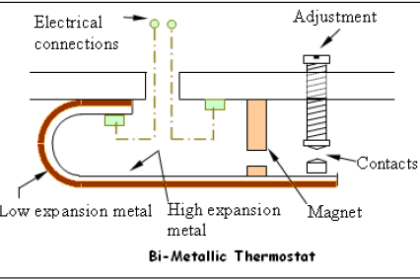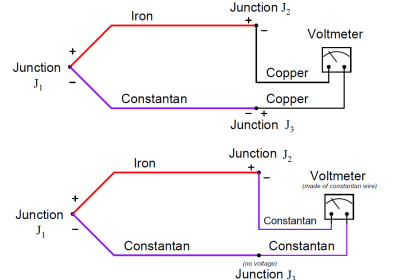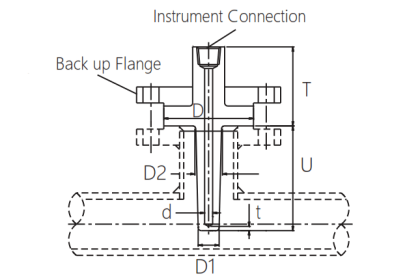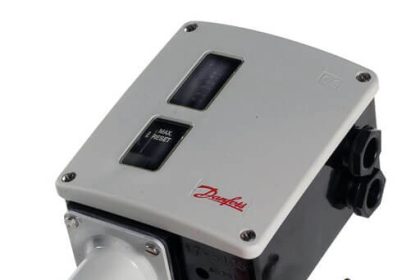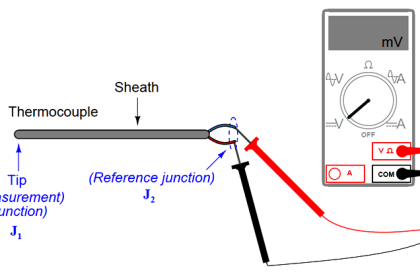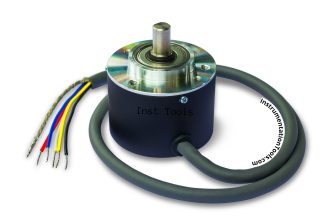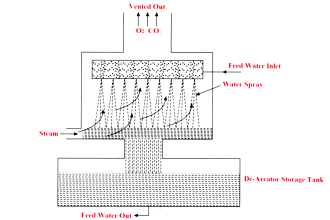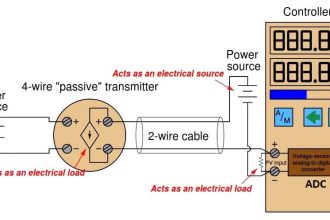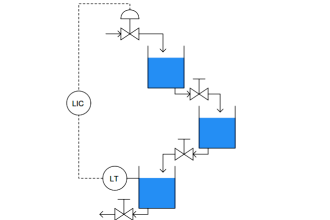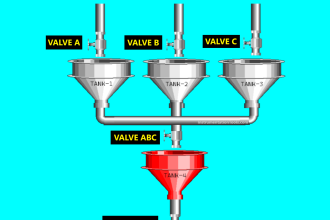Thermocouples Green Rot Effect
Type “K” thermocouples are widely used for temperature measurement and control up to about 2000 Deg F. They operate very well in oxidizing atmospheres.
However, if a reducing gas (such as hydrogen) is present, a reducing atmosphere can come in contact with the wires. Under these conditions, with only a very small amount of oxygen present, the chromium in the chromel alloy oxidizes. This reduces the emf output and the thermocouple reads low temperature reading. This phenomenon is known as “green rot,” due to the color of the affected alloy.
Although not always distinctively green, the chromel wire will develop a mottled silvery skin and become magnetic. An easy way to check for this problem is to see if the two wires are magnetic. (Normally, chromel is non-magnetic.)
Hydrogen in the atmosphere is the usual cause of green rot. At high temperatures, it can diffuse through solid metals or an intact metal thermowell. Even the sheath of a magnesium oxide insulated thermocouple will not keep the hydrogen out.
To overcome this problem, a “purged” thermowell is used. Here, a flow of air is brought down through a small tube inside the thermowell to sweep out any hydrogen which has entered the well. (See Below Figure) The small air flow becomes heated on its way down the tube, so it doesn’t chill the sensing junction.
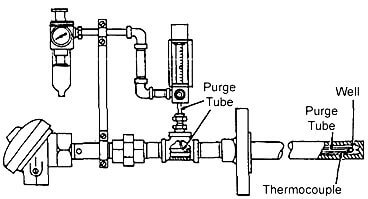
Fig : Installation of a purge tube allows air to be introduced into the thermowell. The air eliminates hydrogen that has entered the well and which would create a reducing atmosphere around the thermocouple.
Type K Thermocouple
The Type K thermocouple is composed of a Nickel-10% chromium (+) wire versus a nickel-5% aluminum and silicon (-) wire. This type of thermocouple should only be used in oxidizing or inert atmospheres with a service temperature range between -200°C and 1260°C (-330°F to 2300°F). They are most widely used at temperatures above 540’C (1000″F) due to superior oxidation resistance in comparison to Types E, T, or J.
There are some conditions which should be avoided when using Type K thermocouples. Vacuum applications should not use Type K due to vaporization of chromium in the positive element. Type K thermocouples should not be used in Sulfurous environments since both elements will rapidly corrode and the negative element will eventually fail mechanically due to becoming brittle. Reducing atmospheres should also be avoided.
Low oxygen levels can cause the Green-Rot phenomenon in which the chromium in the elements starts to oxidize causing large negative drifts in calibration. Green-Rot is most pronounced when the thermocouples are used between 815°C to 1040°C (1500°F to 1900°F).
ln order to avoid this problem, large lD protection tubes should be used to maximize internal air circulation or the installation of an oxygen getter in the bottom of the protection tube. lf Green-Rot is a serious problem, Type N thermocouples should be installed.
The negative element, or KN, of a Type K thermocouple can be described by any of the following names: Alumel2, HAI-KN1, ThermoKanthal-KNs, T-2s, Nickel-silicon, or Nial+. The positive element, or KP, of a Type K thermocouple can be described by the following names: Chromel2, Tophel+, ThermoKanthal-KPs, Nickel-chrome, T-13, or HAI-KP1.
Type N Thermocouple
The Type N thermocouple is composed of a nickel-14% chromium-1 1/2% silicon (+) wire versus a nickel 4 1/2% silicon-1/10% magnesium (-) wire. The Type N thermocouple is the newest addition to the ISA family.
lt was developed to be used under the same conditions as a Type K. Type N should be used in oxidizing or inert atmospheres with a service temperature range between -200°C and 1260°C (-330°F to 2300°F).
The addition of silicon and chromium makes this type of thermocouple more resistant to Green-Rot and less drifting when compared to a Type K. The negative element, or NN, of a Type N thermocouple can be described by any of the following names: Nisil, nickel-silicon, or, HAI-NN1. The positive element, or NP, of a Type N thermocouple can be described by any of the following names: Nicrosil, nickel-chromium- silicon, or HAI-NP1 .
Sources : asrichards.com transcat.com

